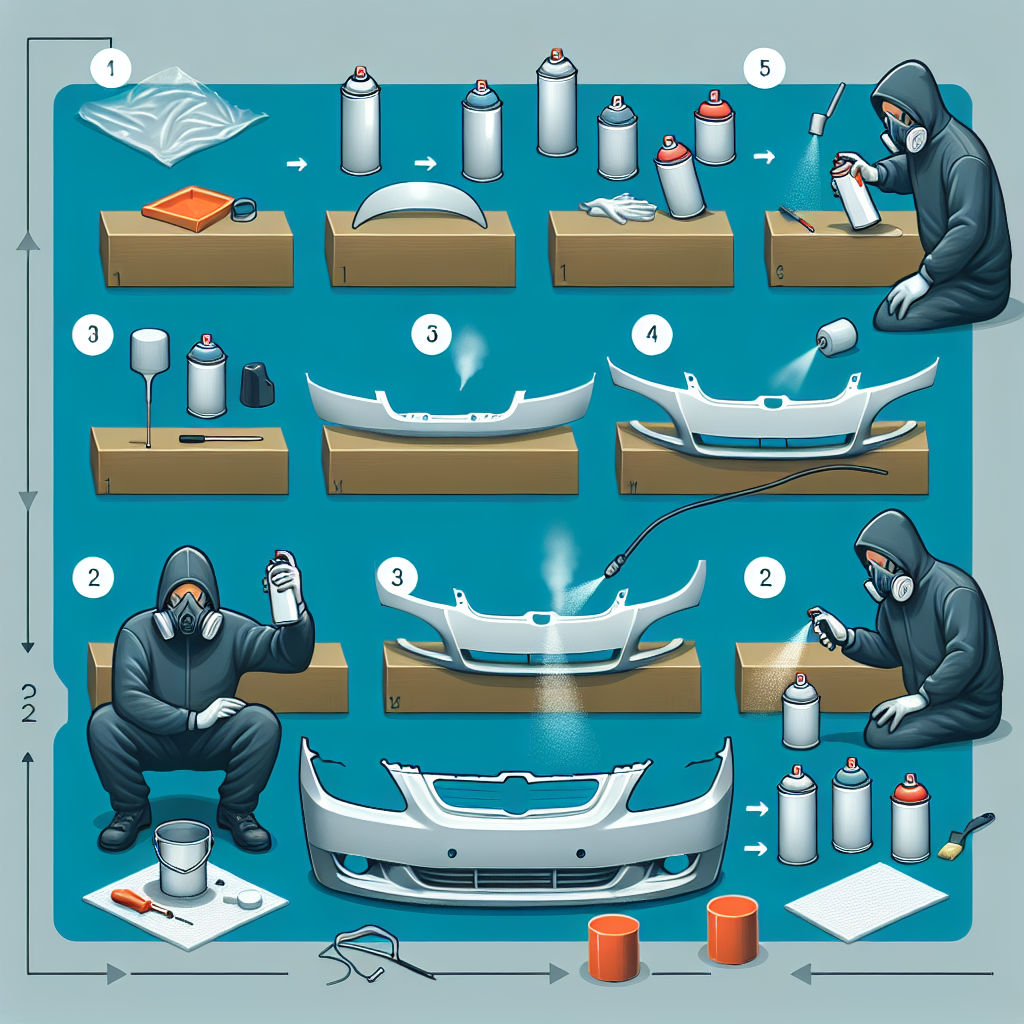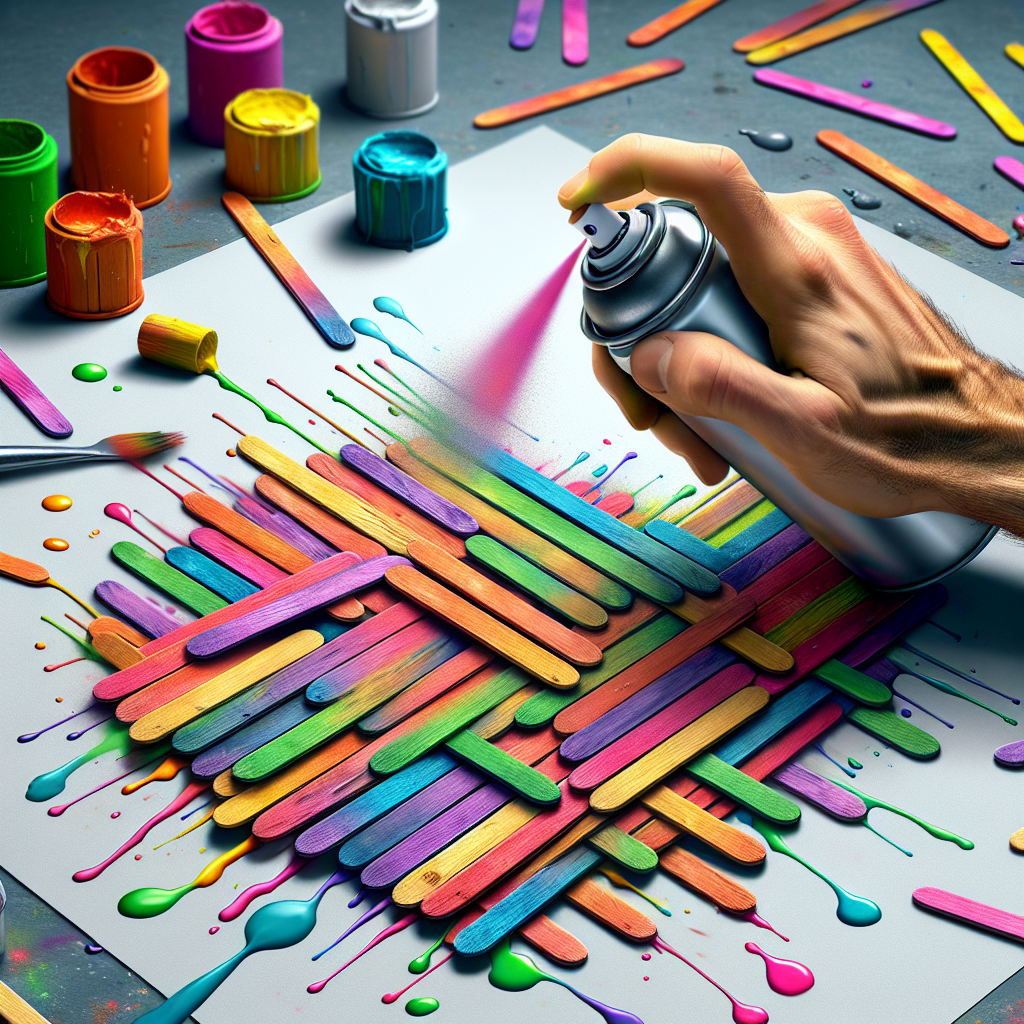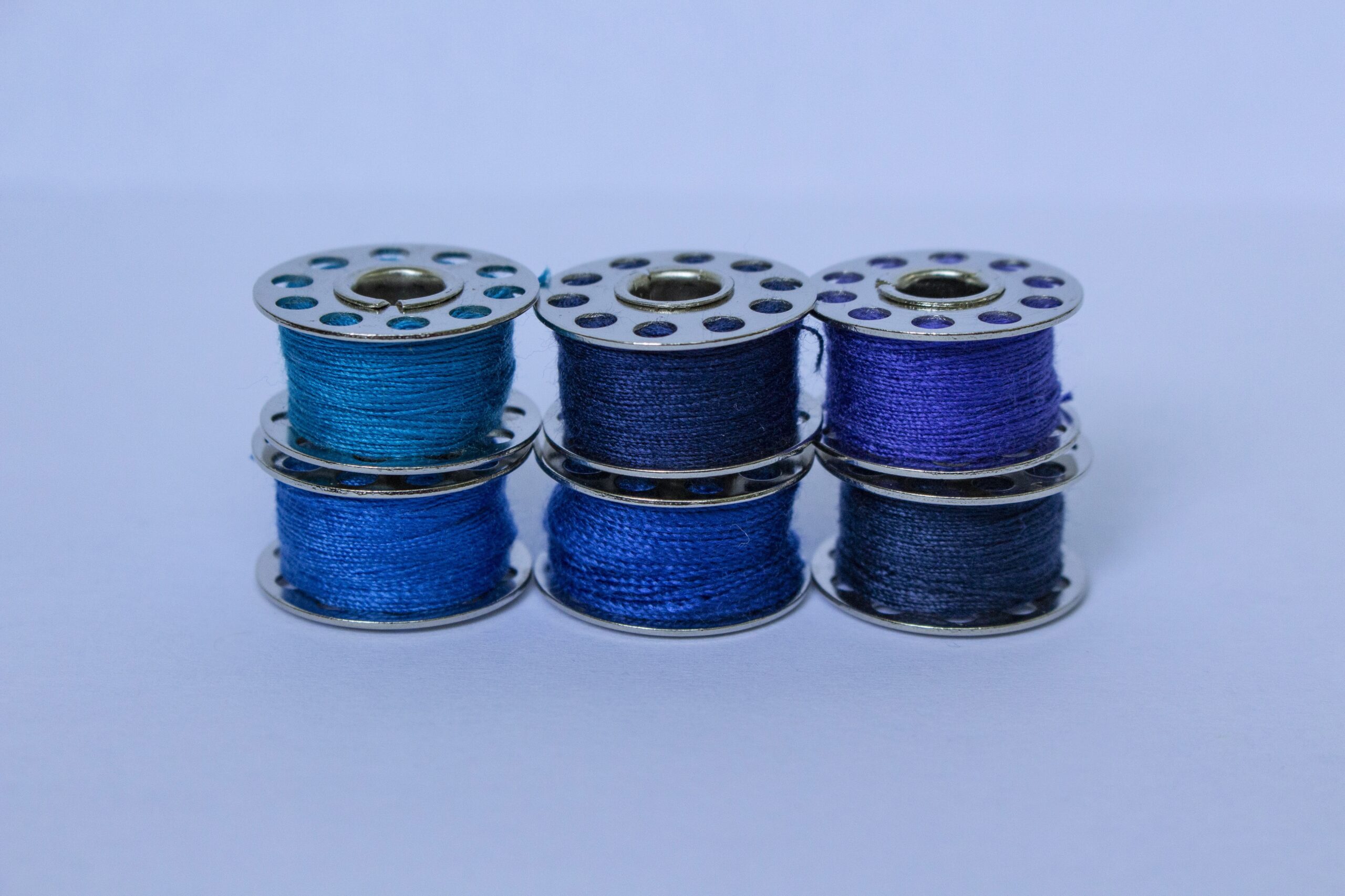In this article, you will learn the step-by-step process of painting a plastic bumper using spray cans. Achieving a professional-looking finish on a plastic bumper can be a challenging task, but with the right techniques and attention to detail, it is possible to restore its appearance and protect it from the elements. Whether you want to cover up scratches or change the color entirely, this guide will provide you with the necessary information and tips to successfully paint a plastic bumper using spray cans.

This image is property of images.unsplash.com.
Preparing the Bumper
Clean the bumper
Before painting a plastic bumper, it is essential to start with a clean surface. Use a mild detergent or automotive soap and water to thoroughly clean the bumper. Scrub the surface gently using a sponge or soft brush to remove any dirt, grime, or debris. Rinse the bumper thoroughly and allow it to dry completely before proceeding to the next step.
Remove any existing paint
If your bumper has any previous layers of paint, it is crucial to remove them to ensure a smooth and seamless finish. There are several methods to remove existing paint from plastic. One option is to use a chemical paint remover specifically designed for plastics. Follow the instructions on the product carefully and ensure you work in a well-ventilated area to avoid inhaling any fumes.
Another method is sanding. Start by using a coarse-grit sandpaper to remove most of the paint, then switch to a finer-grit sandpaper to smoothen the surface. Be cautious not to apply too much pressure to avoid creating gouges or scratches. The goal is to create a surface that is free of old paint and has a slight texture for the new paint to adhere to.
Sand the bumper
Sanding the bumper is an essential step in achieving a smooth and professional-looking finish. Use a fine-grit sandpaper to gently sand the entire surface of the bumper. This helps to remove any rough areas, imperfections, or texture caused by previous paint removal. It also promotes adhesion between the plastic and the primer, ensuring better paint durability.
Apply primer
Priming the bumper is crucial to ensure proper paint adhesion and longevity. Select a primer specifically designed for plastic surfaces. Apply a thin and even coat of primer to the entire bumper, following the manufacturer’s instructions for drying time between coats. The primer acts as a base layer that helps the paint adhere better and provides a smoother finish.
Choosing the Right Paint and Supplies
Selecting the appropriate paint
Choosing the right paint is crucial for achieving the desired results. Look for automotive-grade spray paint that is specifically designed for plastic surfaces. It is important to choose a paint color that matches your vehicle or desired aesthetic. Consider factors such as UV resistance, durability, and compatibility with plastic materials. Reading customer reviews and seeking advice from automotive experts can assist in selecting the best paint for your plastic bumper.
Gathering the necessary supplies
Aside from the paint, you will need a few essential supplies to successfully paint a plastic bumper with spray cans. These supplies typically include masking tape, sandpaper (various grits), a sponge or soft brush for cleaning, a cloth or towel for drying, and a well-ventilated work area.
Using the right type of primer
As mentioned earlier, using a primer specifically designed for plastic surfaces is crucial. The primer prepares the bumper for paint application, improves adhesion, and enhances paint durability. Be sure to read the label carefully to ensure compatibility with plastic materials and follow the manufacturer’s instructions for application.
Preparing the spray can
Preparing the spray can before painting is vital to ensure smooth and consistent paint application. Shake the spray can vigorously for about a minute to ensure proper mixing of the paint and propellants. This helps to achieve a consistent color and finish. Hold the spray can upright while shaking, maintaining a distance from your body and face. Failure to shake the can thoroughly can result in uneven paint coverage or clogging of the nozzle.
Practicing Proper Technique
Understanding the spraying technique
Proper spraying technique is crucial for achieving a smooth and professional-looking finish. Hold the spray can approximately 8 to 10 inches away from the bumper and use a smooth sweeping motion to apply the paint. Begin spraying slightly off the surface before moving steadily and evenly across the bumper. Maintain a consistent distance and speed to ensure even coverage. Practice the spraying technique on a test surface or scrap material before starting on the actual bumper to gain confidence and control.
Maintaining the proper distance
Maintaining a consistent distance between the spray can and the bumper is vital for achieving an even and professional finish. Holding the can too close can result in excessive paint buildup, drips, and runs. On the other hand, holding it too far can lead to uneven coverage and a rough finish. Aim for a distance of approximately 8 to 10 inches from the bumper surface and adjust as necessary based on the manufacturer’s recommendations and specific paint characteristics.
Applying multiple light coats
Rather than applying a thick coat of paint all at once, it is advisable to apply multiple light coats. This technique helps to minimize the risk of drips, runs, and uneven coverage. Allow each coat to dry for the recommended time, usually indicated on the paint can, before applying the next. Applying light coats also facilitates better control and allows for easier correction of any imperfections that may arise.
Avoiding drips and runs
Drips and runs in the paint can significantly impact the quality of the finish. To avoid this, ensure that each coat is applied evenly and not excessively. If you notice any excessive paint buildup or areas where the paint begins to drip, take immediate action to correct it. Use a clean cloth or sponge to gently remove any drips or runs before they dry. This will help maintain a smooth and flawless surface.
Preparing the Work Area
Choosing a well-ventilated location
When painting a plastic bumper, it is essential to work in a well-ventilated area. Adequate ventilation helps disperse fumes and minimize the risk of inhalation. Ideally, choose an outdoor space such as a garage with open doors or a covered area. If an outdoor space is not available, ensure there are windows or doors that can be opened to allow for proper ventilation.
Covering nearby surfaces
To protect nearby surfaces from overspray and potential damage, cover them with plastic sheets or old newspapers. Ensure that the plastic or paper is securely taped down to prevent it from moving during the painting process. This precautionary step will save you time and effort in cleaning up afterwards.
Using masking tape to protect surrounding areas
Masking tape is a handy tool when painting a plastic bumper. Use masking tape to protect any areas of the bumper that you do not want to paint. This can include headlights, fog lights, license plate holders, or any other parts that should remain unpainted. Take your time to apply the tape carefully, ensuring it adheres firmly to the surface and creates a clean and defined border between the painted and non-painted areas.
Ensuring a clean and dust-free environment
Before starting the painting process, it is essential to ensure the work area is clean and free from dust or debris. This is important because any particles that land on the wet paint can ruin the finish or create imperfections. Sweep or vacuum the area to remove any loose dirt or dust. Wipe down nearby surfaces to eliminate any potential sources of contamination. Working in a clean environment will help achieve a flawless and professional-looking paint job.

This image is property of images.unsplash.com.
Applying the Basecoat
Shaking the spray can
Before applying the basecoat, it is essential to shake the spray can thoroughly. This ensures proper mixing of the paint and propellants, which results in consistent color and finish. Hold the can upright and shake it vigorously for about a minute. Avoid shaking the can too close to the painted bumper or any other surfaces to prevent unintentional overspray.
Applying the first coat
Begin by applying the first coat of the basecoat. Hold the spray can approximately 8 to 10 inches away from the bumper, maintaining a consistent distance throughout the process. Use a smooth sweeping motion to apply the paint evenly, starting just off the surface before moving steadily across the bumper. Ensure complete coverage without excessive buildup or drips. Remember to follow the manufacturer’s recommended drying time between coats to allow for proper adhesion and prevent any potential issues with subsequent layers.
Allowing proper drying time
After applying the first coat, it is important to allow the paint to dry thoroughly before applying additional coats. Drying times can vary depending on the specific paint brand and environmental conditions, so it is advisable to refer to the paint can for guidance. Rushing the drying process can lead to smudging, uneven coverage, or blending of layers, compromising the overall finish. Be patient and wait for the recommended drying time to achieve the best results.
Applying additional coats
Once the previous coat has dried, you can apply additional coats to ensure a smooth and consistent finish. Two to three coats are typically sufficient, but refer to the instructions on the paint can for specific recommendations. Each subsequent coat should be applied in the same manner as the first coat, maintaining a consistent distance and speed. Ensure proper drying time between coats to allow for proper adhesion and a flawless finish.
Adding Clear Coat for Protection
Selecting a suitable clear coat
Applying a clear coat to the painted bumper adds an extra layer of protection and enhances the overall durability of the finish. When selecting a clear coat, it is important to choose one that is compatible with the paint used and specifically designed for automotive applications. Opt for a clear coat with UV-resistant properties to prevent fading and yellowing over time. Read the manufacturer’s instructions to ensure proper application and compatibility with the basecoat.
Applying the clear coat evenly
Before applying the clear coat, ensure the basecoat is completely dry. Shake the spray can of clear coat vigorously to mix the contents thoroughly. Hold the can approximately 8 to 10 inches away from the bumper and apply the clear coat using smooth and even strokes. Maintain a consistent distance and speed to achieve an even application. Apply thin coats, allowing proper drying time between each coat as recommended by the manufacturer.
Allowing sufficient drying time
After applying the clear coat, allow sufficient time for it to dry completely. The drying time can vary depending on the specific clear coat product, environmental conditions, and thickness of the coats applied. Ensure the painted bumper is kept in a clean and dust-free area during the drying process. Rushing the drying time can lead to imperfections such as streaks, smudges, or a dull finish. Follow the manufacturer’s instructions for the recommended drying time before proceeding to the next step.
Buffing and polishing for a smooth finish
Once the clear coat has dried, you can enhance the shine and smoothness of the finish by buffing and polishing the painted surface. Use a soft, clean cloth or a polishing pad attached to a rotary or orbital buffer. Apply a small amount of automotive polish or compound to the cloth or pad and work it into the painted surface using moderate pressure. Continue buffing until you achieve the desired level of shine and smoothness. This step helps remove any minor imperfections and further enhances the overall appearance of the painted bumper.

This image is property of images.unsplash.com.
Dealing with Imperfections
Identifying common imperfections
Even with careful preparation and application, imperfections can occur during the painting process. Common imperfections include dust particles, orange peel texture, runs, drips, or uneven coverage. It is important to identify these imperfections to take appropriate corrective measures.
Repairing and sanding problem areas
If you notice any imperfections on the painted surface, such as runs or drips, you can correct them using sandpaper or a sanding block. Take care to select an appropriate grit sandpaper based on the severity of the imperfection. Gently sand the affected area until it becomes level with the surrounding surface. Be cautious not to sand too aggressively, as this can remove the clear coat or damage the paint. Afterwards, carefully clean the sanded area and surrounding surface to remove any dust or debris before proceeding with touch-up paint.
Applying touch-up paint
For minor imperfections or areas that require specific color correction, touch-up paint can be used. Choose touch-up paint that matches the color of the basecoat, and apply it using a small brush or fine-tipped applicator. Take care to apply the paint sparingly and blend it seamlessly with the surrounding area. Allow the touch-up paint to dry completely before moving on to the next step.
Blending the repaired areas
To ensure a seamless finish, blend the repaired areas with the rest of the painted bumper. Start by lightly sanding the edges of the repaired area with a fine-grit sandpaper. This helps to feather the edges and create a smooth transition between the repaired section and the surrounding surface. Use a soft cloth or sponge to gently remove any sanding residue. Finally, apply a clear coat over the entire bumper to unify the repaired areas with the rest of the paint job.
Finishing Touches
Removing protective masking tape
Once the paint and clear coat have dried completely, it is time to remove the protective masking tape. Carefully peel off the tape, ensuring that no adhesive residue or paint is pulled off with it. Take your time to remove the tape slowly and steadily to avoid any accidental damage to the freshly painted surface.
Cleaning the work area
Cleaning the work area is an important final step to ensure a tidy finish and prevent any potential damage to your surroundings. Dispose of any used masking tape, plastic sheets, or newspapers properly. Sweep or vacuum the area to remove any loose dirt or debris that may have accumulated during the painting process. Wipe down nearby surfaces to remove any overspray or residue. Leaving the work area clean and tidy reflects your commitment to achieving a professional result.
Inspecting for any touch-ups needed
With the masking tape removed and the work area cleaned, take a moment to inspect the painted bumper for any touch-ups that may be necessary. Look for any missed spots, areas that require additional blending, or minor imperfections that may have been overlooked. Address these issues promptly to achieve a flawless and professional finish.
Applying a final protective wax coating
To further protect the painted bumper and enhance its shine, consider applying a final protective wax coating. Select an automotive-grade wax designed for painted surfaces and follow the manufacturer’s instructions for application. Applying a wax coating not only adds an extra layer of protection against the elements but also enhances the overall appearance and makes the painted bumper easier to clean.

Curing and Maintaining the Painted Bumper
Allowing sufficient curing time
After completing the painting process, it is important to allow the paint to cure properly before subjecting it to harsh conditions or cleaning. Curing time can vary depending on the specific paint brand and environmental conditions. Generally, it is advisable to wait at least 24 to 48 hours before exposing the painted bumper to extreme temperatures, heavy rain, or other potentially damaging factors. Patience is key to ensuring the longevity and durability of your paint job.
Avoiding harsh chemicals or pressure washers
To maintain the quality and appearance of the painted bumper, it is crucial to avoid using harsh chemicals or pressure washers during cleaning. Opt for mild automotive soap or detergent diluted in water and use a soft sponge or cloth to wash the bumper. Avoid scrubbing aggressively, as this can potentially damage the paint. Rinse with clean water and gently dry the bumper using a microfiber cloth or a soft towel. Using a pressure washer or abrasive cleaning agents can strip away the protective clear coat layer and damage the paint surface.
Regularly cleaning and waxing the bumper
To keep the painted bumper looking its best, regular cleaning and waxing are essential. Regular washing helps remove dirt, dust, and other contaminants that can degrade the finish over time. Waxing every few months provides additional protection against ultraviolet (UV) rays, oxidation, and environmental factors. Follow the manufacturer’s instructions for the specific cleaning and waxing products you choose.
Periodically inspecting for any damage
Even with proper care and maintenance, damage can occur to a painted bumper over time. Periodically inspect the bumper for any signs of peeling, fading, chipping, or scratching. Promptly address any such issues with touch-up paint or appropriate repair methods to prevent further damage and maintain the aesthetic appeal of your painted bumper. Regular inspections and timely repairs can significantly extend the lifespan of your paint job and help avoid more costly repairs down the line.
Seeking Professional Assistance
When to consider professional help
While painting a plastic bumper with spray cans can be a rewarding DIY project, there are instances where seeking professional assistance may be more appropriate. If you lack the necessary experience, tools, or access to a suitable workspace, it might be wise to consult a professional auto body shop. Additionally, if your plastic bumper requires extensive repairs, color matching, or complex paint techniques, professional help is highly recommended to ensure a flawless and long-lasting finish.
Finding a reputable auto body shop
When searching for a reputable auto body shop, consider asking for recommendations from friends, family, or local automotive enthusiasts. Look for shops that specialize in plastic bumper repair and have experience with automotive painting. Check online reviews or visit the shops personally to assess their professionalism, equipment, and attention to detail. Request examples of their previous work to gauge the quality and consistency of their paint jobs.
Getting cost estimates
Before committing to a professional auto body shop, it is crucial to obtain cost estimates for the painting services. Arrange for multiple estimates from different shops to compare prices and ensure a fair quote. Inquire about the specific services included in the estimate, such as preparation, priming, paint application, and finishing touches. Ask if there are any additional charges for color matching, repairs, or warranty coverage. Weigh the cost against your budget and desired quality to make an informed decision.
Evaluating the benefits of professional work
Professional painting services offer several advantages over DIY paint jobs with spray cans. Experienced technicians have the expertise to perform precision color matching, flawless application, and repairs, resulting in a factory-like finish. Professional shops often have advanced equipment, controlled environments, and access to premium paint products, enhancing the overall quality and longevity of the painted bumper. Additionally, reputable auto body shops may provide warranty coverage for their work, which can provide peace of mind and protection against unexpected issues.
In conclusion, painting a plastic bumper with spray cans is a manageable DIY project with proper preparation, technique, and care. By following the outlined steps and using high-quality materials, you can achieve a professional-looking finish that enhances the appearance of your vehicle. However, if you are unsure about your abilities or require extensive repairs or specialized techniques, seeking professional assistance from an auto body shop is a recommended alternative. Remember to prioritize safety, cleanliness, and patience throughout the painting process to achieve exceptional results for your plastic bumper.




